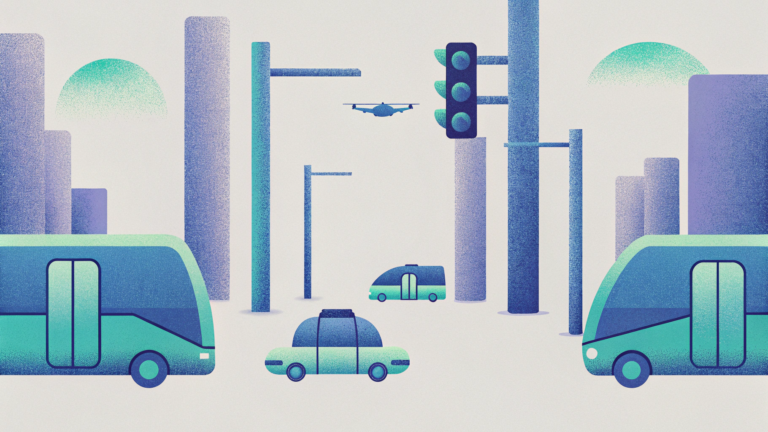Ather Energy: The Bold Startup Electrifying India’s Two-Wheeler Market

Back in 2013, Tarun Mehta and Swapnil Jain, fresh-faced engineering grads with more ambition than resources, looked at India’s congested roads and thought, “Why are we still inhaling petrol fumes in 2013?” Starting from the incubation centre of IIT Madras, their alma mater, they ventured into battery development, but would soon shift to developing a fully electric scooter. (Ather Energy)
Armed with zero fear and a passion for clean tech, they ditched battery R&D mid-way and decided, heck, let’s build the entire scooter ourselves. Bold? Absolutely. Risky? Of course. But legendary journeys rarely start with playing it safe.
Fast-forward to today: Ather isn’t just “another EV company.” It’s the brain behind some of India’s smartest two-wheelers—the Ather 450X, 450S, 450 Apex, and the new Ather Rizta. Headquartered in Bengaluru, Ather has quickly become a key player in the electric vehicle (EV) market, known for its innovative products and commitment to sustainable transportation.
By developing electric scooters that rival their petrol-powered counterparts in terms of performance, range, and convenience, Ather is helping to accelerate the adoption of EVs in India. This shift is crucial for reducing air pollution, combating climate change, and creating a cleaner, greener future for generations to come. Beyond just manufacturing electric scooters, Ather has also established Ather Grid. Ather Grid is an electric vehicle charging infrastructure and has set up over 1000 fast charging points in 80+ cities across India as of May 2023.
From IIT Madras labs to India’s roads: Meet the duo behind the electric revolution
Ather Energy was founded in 2013 by Tarun Mehta and Swapnil Jain, two young and ambitious entrepreneurs with a shared passion for engineering and a vision for the future of electric mobility in India.
Both Tarun and Swapnil are alumni of the prestigious Indian Institute of Technology (IIT) Madras, where they pursued a dual degree in Engineering Design. Before embarking on their Ather Energy journey, both founders had prior entrepreneurial experience. Swapnil looked after system design and development. They were also both a part of the Formula SAE (Society of Automotive Engineers) team of IIT-M, where they led various product development projects. This involvement in the Formula SAE team provided them with invaluable hands-on experience in designing, building, and testing high-performance vehicles. (Tarun Mehta)
The story of Ather Energy began in the IIT Madras campus where they attempted to create better batteries. They began working on a mock vehicle at the campus’s incubation centre to test out battery packs with the hope of selling them to automakers. They soon realised that it would be easier to sell EVs to customers than batteries to OEMs. The transition to EVs had opened up a level-playing field for India’s new-age startups. In 2013, they ventured to create high-speed, electric two-wheelers for the Indian market, and their first product was the Ather S340, a smart electric two-wheeler. (Swapnil Jain)
India Electric Two-Wheeler Market: Why EVs are the hottest wheels on the block
The India electric two-wheeler market is experiencing significant growth, driven by increasing environmental awareness and the need for sustainable and efficient urban mobility solutions. In 2024, the market size reached 960.0 Thousand Units. Looking ahead, the market is expected to reach 11,145.0 Thousand Units by 2033, exhibiting a substantial growth rate (CAGR) of 28.5% during the period of 2025-2033. (IMARC)
Several factors contribute to this positive outlook. The rising integration of smart features in electric two-wheelers, including connectivity, navigation, and remote monitoring, enhances the overall user experience and aligns with the digitalization trend in the automotive industry. The increasing consumer environmental consciousness also accelerates the demand.
The Indian government’s supportive policies, such as subsidies and tax benefits, and initiatives like the Faster Adoption and Manufacturing of Hybrid and Electric Vehicles (FAME) scheme, encourage consumers to adopt electric two-wheelers. Continuous improvements in battery technology, leading to increased range and enhanced performance, further propel the market forward. (FAME)
Regionally, a comprehensive analysis of all the major markets, including North India, West and Central India, South India, and East and Northeast India, is provided in the full market report. This regional analysis offers insights into the specific dynamics and growth opportunities within each region, aiding stakeholders in making informed decisions and developing targeted strategies.
More Than a Scooter: Ather’s Vision for Sustainable Mobility
From its inception, Ather aimed to build a complete ecosystem around electric two-wheelers, challenging the status quo of the Indian automotive market. Their vision extends beyond simply selling vehicles; they aspire to accelerate the adoption of electric mobility in India by providing a superior ownership experience and fostering a supportive charging infrastructure.
Problems They Solve
The problems Ather is actively trying to solve are multi-faceted. Firstly, they address range anxiety, a major deterrent for potential EV buyers, by designing scooters with practical real-world ranges and establishing a widespread charging network. Secondly, they tackle the perception of EVs as being underpowered or lacking in performance by developing high-performance electric scooters that rival, and often exceed, the capabilities of their petrol-powered counterparts.
Thirdly, Ather aims to elevate the overall user experience through connected features, over-the-air (OTA) updates, and a seamless digital interface, something often lacking in traditional scooters. Finally, they are contributing to a cleaner environment by offering a zero-emission transportation alternative, directly addressing concerns about air pollution in urban areas.
Business Model
Ather’s business model is vertically integrated, meaning they control key aspects of their product development and customer experience. This includes in-house design and engineering of their scooters, development of their own battery packs and management systems, and the deployment and management of the Ather Grid charging infrastructure. This control allows them to maintain quality, innovate rapidly, and ensure a consistent user experience across all touchpoints. They also operate their own experience centers, providing potential customers with a hands-on opportunity to learn about and test ride their scooters.
Revenue Model
The revenue model for Ather is primarily driven by the sale of their electric scooters. However, revenue streams are also generated through several supplementary channels. Subscriptions to Ather Connect, which provides connected vehicle features like navigation, ride statistics, and remote diagnostics, contribute to recurring revenue. Ather Service, offering comprehensive maintenance and repair packages, adds another layer of revenue generation.
Additionally, they generate revenue from the Ather Grid charging network, charging users for electricity consumed at their public charging points. Sales of merchandise and accessories related to the Ather brand are also a part of their revenue model. It is important to note that the company is still in a growth phase, and while revenue is increasing, profitability is an ongoing focus as they continue to scale their operations and expand their product offerings.
Ather’s Lineup: Scooters, Software & Supercharged Solutions
Ather Energy has established itself as a key player in the Indian electric vehicle market by offering a comprehensive ecosystem built around its electric scooters and supporting infrastructure. Their product lineup includes the popular Ather 450 series and the newly introduced Ather Rizta, each designed to cater to specific customer needs and preferences.
The Ather 450 series comprises the original Ather 450 (launched in 2018), the higher-performance Ather 450X (introduced in 2020), and the more affordable Ather 450S (released in August 2023). With the introduction of the Ather Rizta in April 2024, Ather has expanded its focus to include family-oriented riders, offering a scooter designed for comfort, practicality, and shared mobility.
Beyond the scooters themselves, Ather has invested heavily in building a robust charging infrastructure. The Ather Grid, their public charging network, plays a critical role in alleviating range anxiety and promoting EV adoption. As of March 2024, this network boasted an impressive 1,900 fast-charging points spread across 200 cities, making it one of the most extensive charging networks for electric two-wheelers in India. Further strengthening its commitment to accessible charging, Ather partnered with Hero MotoCorp in December 2023 to create an interoperable fast-charging network, allowing users of different EV brands to utilize the same charging infrastructure.
Ather’s offerings extend beyond hardware, placing significant emphasis on software and connectivity. The Atherstack 6.0 platform is a testament to this, packing an impressive 64 features designed to enhance the overall riding experience. These features span multiple categories, including navigation, analytics, ride assistance, safety, and productivity.
Atherstack 6.0 integrates seamlessly with popular services such as WhatsApp for communication, enabling features like live location sharing and even automatic call response. Functionalities like ‘Ping my scooter’ and Amazon Alexa integration further enhance convenience and connectivity. Moreover, Ather leverages Over-the-Air (OTA) updates to continuously improve scooter performance, introduce new features, and refine existing functionalities, ensuring that Ather scooters remain at the forefront of technological innovation.
Innovation Under the Hood: Traction control, OTA updates, Alexa integration
This commitment translates into a large portion of Ather’s workforce being directly involved in innovation. Approximately 46% of their employees are dedicated to R&D activities, highlighting the company’s focus on continuous improvement and technological advancement. To further bolster their R&D capabilities, Ather inaugurated a new 38,692 sq. ft. facility in Bengaluru in February 2025. This state-of-the-art facility is equipped with specialized labs for structural durability testing, comprehensive battery testing, electrical and electronics reliability assessments, and even vehicle environment testing.
Beyond performance and range, Ather prioritizes rider safety through innovative features. SkidControl™, a traction control system, actively monitors and adjusts motor torque to prevent skidding when riding on low-friction surfaces, providing enhanced stability and control. FallSafe is another critical safety feature that automatically cuts off power to the motor if the scooter detects a fall, mitigating the risk of further injury or uncontrolled movement. Furthermore, the Emergency Stop Signal (ESS) automatically activates flashing lights during sudden stops at high speeds, alerting following drivers and reducing the likelihood of rear-end collisions. These features exemplify Ather’s commitment to a safer riding experience.
Ather utilizes sophisticated tools and techniques in their design process, including model-based design using platforms like MATLAB and Simulink. This allows their engineers to simulate and optimize scooter designs rapidly, evaluating design alternatives and significantly reducing the time and resources required for physical testing. This approach enables faster innovation cycles and ultimately contributes to a more refined and efficient product. Battery technology is another area of focus. Ather’s battery packs undergo rigorous testing, including thermal performance assessments, water wading tests, drop tests, and vibration and thermal cycling. These tests ensure the battery packs meet stringent standards, including IPX7 waterproof standards and AIS 156 compliance, guaranteeing safety and reliability in diverse operating conditions.
Ather’s Rising Star Moment: IPO plans for the scooter of the year
Ather Energy has made significant strides in the Indian electric vehicle market, underlined by its strategic expansion and upcoming IPO. The company filed for an Initial Public Offering (IPO) in September 2024, aiming to raise ₹45 billion (approximately $536.2 million) with a target valuation of $2.5 billion.
The capital raised is earmarked for establishing a new electric two-wheeler manufacturing plant in Maharashtra, along with dedicated marketing initiatives. This follows their existing manufacturing footprint of two facilities in Hosur, Tamil Nadu, further solidifying their commitment to meeting the escalating demand for electric scooters.
Ather’s commitment to excellence has been recognized through several prestigious awards and accolades. In 2024, the company was awarded the “Most Preferred Workplace (Manufacturing Edition)” by Marksmen Daily. Demonstrating its dedication to employee well-being, Ather was also recognized as one of the “Top 25 Safest Workplaces in India” by kelpHR PoSH Awards in 2023.
Furthermore, the leadership of Ather has been celebrated. Co-founder Tarun Mehta received the “Keep Walking Award” from IIA Leadership Awards in 2023 and the “Jagdish Khattar Rising Star Award” from Acko Drive Awards in the same year. Mehta and co-founder Swapnil Jain were jointly awarded the “Young Entrepreneur Award” by AIMA India in 2023. The Ather 450X was named “Electric Scooter of the Year” by BBC Top Gear India in 2023, and the company was recognized as the “Two Wheeler Manufacturer of the Year” at the Car and Bike Awards in 2022.
Building India’s EV Charging Superhighway: Collaborating with BPCL, Hero, Google & more
Recognizing the importance of a robust charging infrastructure, Ather has actively collaborated with companies like Bharat Petroleum Corporation Limited (BPCL) and Magenta ChargeGrid. The partnership with BPCL, initiated in July 2023, provides access to BPCL’s extensive network of over 21,000 fuel stations nationwide, enabling Ather to install its public fast-charging grid across the country. Earlier, in May 2022, Ather joined forces with Magenta ChargeGrid to install Ather Grid fast chargers across multiple locations, further accelerating the expansion of public charging networks.
In line with this commitment to expanding charging infrastructure, Ather also partnered with ChargeMOD, a charge point operator in Kerala, in February 2025. This collaboration added 121 charging locations across Kerala, significantly strengthening Ather’s charging network in South India.
Beyond charging infrastructure, Ather is also focused on improving the core technology and user experience of its scooters. In August 2024, Ather signed an agreement with Amara Raja Energy & Mobility (ARE&M) to develop and source lithium-ion battery cells for its electric scooters, with the cells being produced at Amara Raja’s upcoming Gigafactory in Telangana.
Also, in August 2024, Ather collaborated with Google to provide real-time availability information on two-wheeler fast charging stations. This integration allows EV users to find ‘Ather Grid’ fast chargers on Google with live status updates. Ather has also partnered with Salesforce to enhance consumer experiences, leveraging Salesforce’s solutions to streamline customer interactions and support services.
From Seed to Series E: How $500M+ in funding is fueling the company’s growth
Ather Energy has secured a total equity funding of $502 million across 14 rounds. These rounds consist of 2 Seed rounds, 4 Early-Stage rounds, and 8 Late-Stage rounds. Ather has attracted investments from 36 different investors, comprising 15 institutional investors and 21 angel investors, revealing a broad base of support. (Tracxn)
The most recent funding round occurred in August 2024, with a Series E infusion of $71.5 million from NIIF, valuing the company at $714 million post-money. Earlier in the year, Ather also raised $24 million in Venture Debt and an undisclosed amount in Series E funding from Stride Ventures. In September 2023, Ather secured a significant $109 million in a Series E round, with participation from GIC, Caladium Investment, Herald Investment Management, and Hero MotoCorp.
Looking at Ather’s revenue trajectory, the company experienced substantial growth. The trailing twelve-month (TTM) revenue reached $220 million in September 2023, a significant increase from $140 million in September 2022, $83.7 million in May 2022, and $48.3 million in January 2022. Ather’s revenue stood at $216.1 million in FY 2023-24 and $224.5 million in FY 2022-23. This figure represents a substantial leap from the $55.5 million recorded in FY 2021-22 and even further from $11.9 million in FY 2020-21.
Final Charge: Ather’s Journey from a Garage Startup to EV Powerhouse
From their flagship models like the Ather 450X, 450S, and Rizta, to the expansive Ather Grid charging infrastructure, the company’s approach is deeply future-forward. By focusing on performance, design, connectivity, safety, and infrastructure, Ather is addressing the real barriers to EV adoption: range anxiety, lack of charging points, outdated perceptions of electric vehicles, and fragmented user experiences.
Their vertically integrated business model allows them to innovate faster and deliver consistently high-quality products and services. With over 1,900 charging stations across 200 cities, strategic collaborations with industry giants, and continuous investment in R&D, Ather has positioned itself as a leader in India’s electric revolution—not just building scooters, but paving the road to a cleaner, smarter future.At Venture Kites, we believe that bold ideas backed by thoughtful execution, like Ather’s journey, are what shape the future. If you’re sitting on an idea that challenges the status quo—start building it. Now is the time. And while you’re here, check out more founder stories and startup journeys on Venture Kites—because inspiration is only one story away.
At a Glance with DORK Company
Dive In with Venture Kites
Lessons From Ather
Be Bold Enough to Pivot
The Lesson & Why it matters: Changing direction is not failure—it’s progress. Great companies pivot when needed.
Implementation: Stay open to feedback and market signals. Don’t get emotionally attached to initial ideas.
How Ather implements it: They shifted focus from battery packs to building scooters themselves when they saw more impact and opportunity.
Make Safety a Feature, Not a Checklist
The Lesson & Why it matters: Users trust brands that prioritize their well-being. Safety should be a standout feature, not an afterthought.
Implementation: Bake safety into design. Use technology to proactively protect users.
How Ather implements it: Features like SkidControl™, FallSafe, and Emergency Stop Signals show Ather’s proactive approach to rider safety.
Leverage Software to Stand Out
The Lesson & Why it matters: Hardware can impress, but software keeps users hooked. It’s what makes a product feel alive and future-proof.
Implementation: Invest in building a flexible, updateable software layer. Think about connected features, OTA updates, and integrations.
How Ather implements it: Their Atherstack 6.0 platform offers 60+ features and continuous OTA updates, from Alexa integration to ride analytics.
Create Demand by Removing Friction
The Lesson & Why it matters: Users often want to switch—they just need fewer barriers. Make the transition easy.
Implementation: Solve for real hesitations. Whether it’s infrastructure or perception, tackle what stops users from buying.
How Ather implements it: They addressed range anxiety with fast charging and high-performance scooters, and partnered with Hero and BPCL to expand charging access.
Collaborate Strategically
The Lesson & Why it matters: You can go fast alone, but far together. Smart partnerships amplify reach and capabilities.
Implementation: Identify partners who fill your gaps—distribution, tech, supply chain, or customer experience.
How Ather implements it: They partnered with Google for real-time charger visibility, Amara Raja for batteries, and Salesforce for customer support.
Youtube Shorts
Author Details
Creative Head – Mrs. Shemi K Kandoth
Content By Dork Company
Art & Designs By Dork Company












